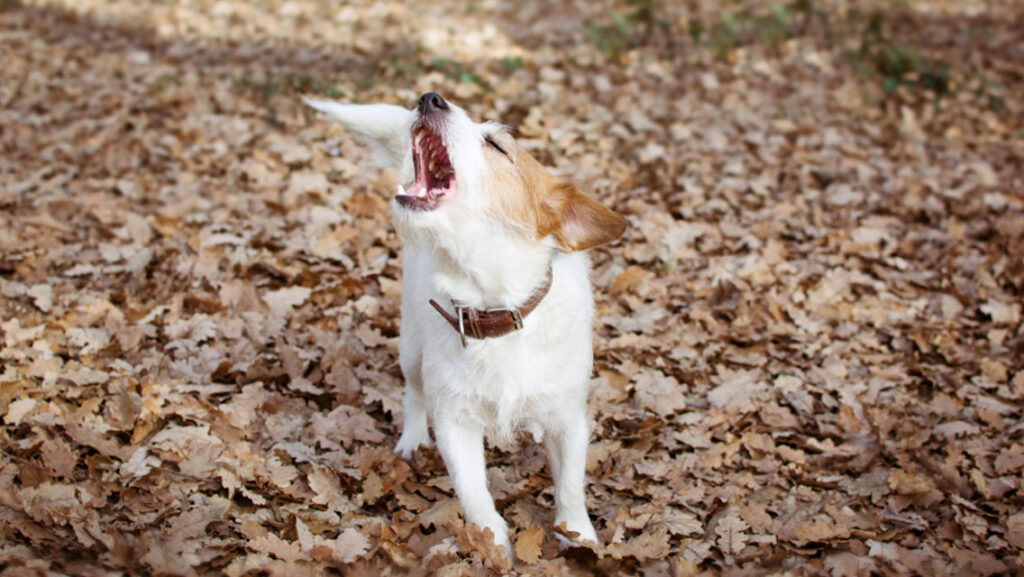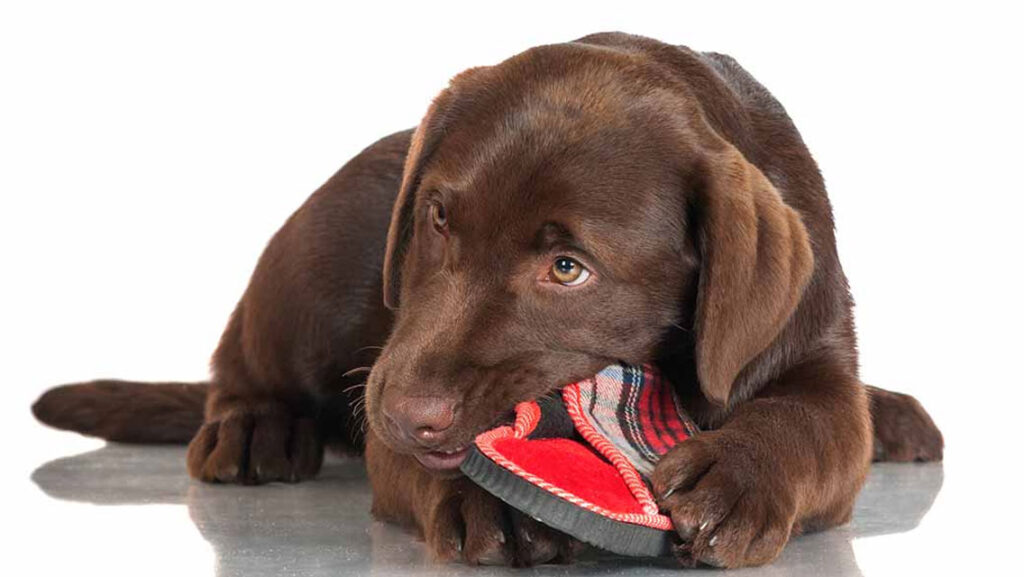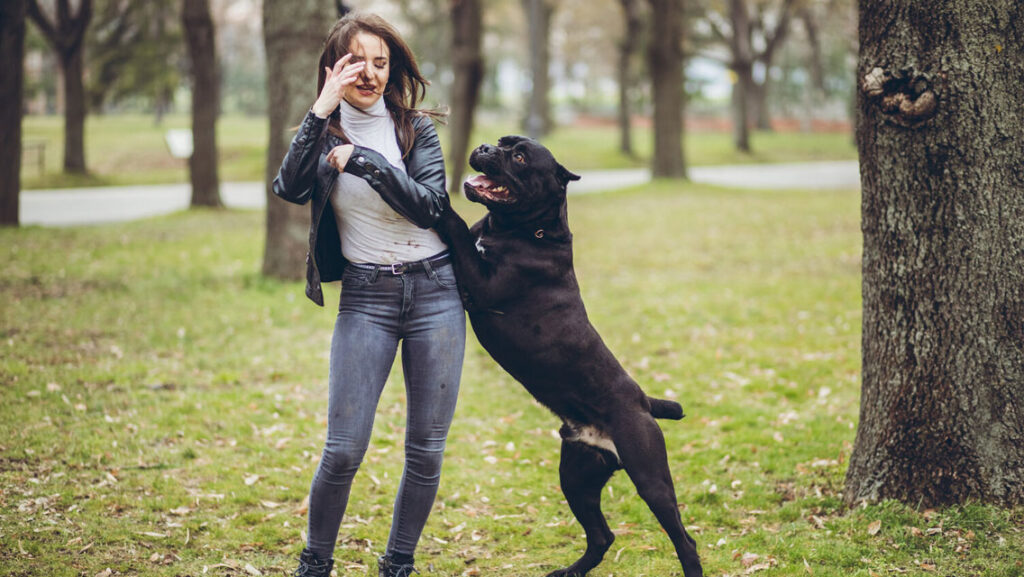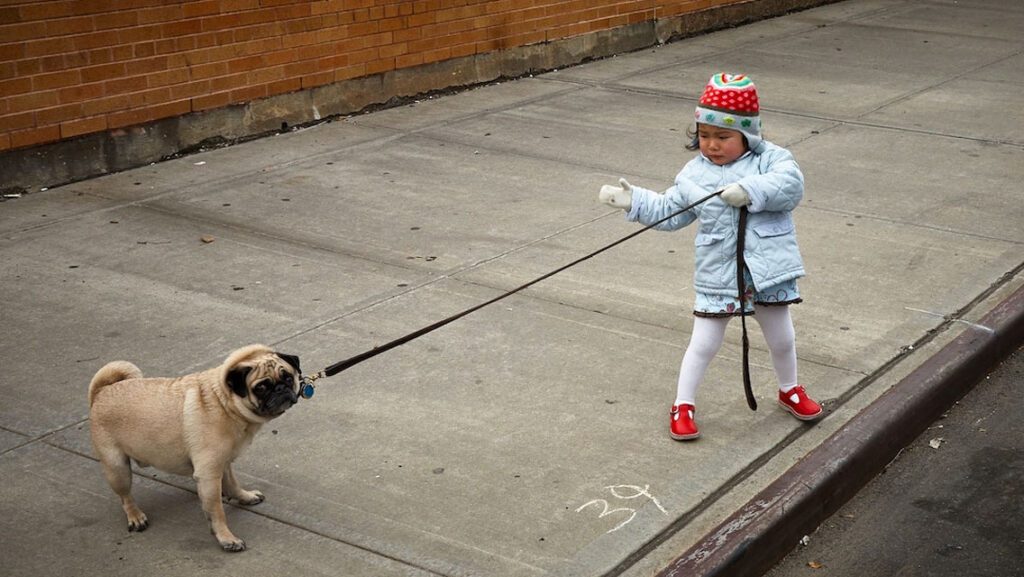Understanding Your Dog’s Behavior: Top 10 Common Dog Behavior Problems and Solutions include separation anxiety, aggression, hyperactivity, and inappropriate play. This blog aims to provide solutions to these common behavior problems to help you understand and manage your furry friend better.
By addressing these issues, you can improve your dog’s well-being and create a harmonious environment for both of you.
1. Aggression: Addressing Different Forms Of Aggression
Aggression is the most common and most serious behavior problem in dogs. It is important for dog owners to understand the different forms of aggression in order to address and resolve them effectively.
Aggression towards humans
Aggression towards humans can be a serious concern and should not be taken lightly. It can manifest in various ways, including growling, barking, lunging, or even biting.
To address aggression towards humans, it is important to identify the underlying cause of the behavior. Possible causes may include fear, resource guarding, or territoriality. Consulting with a professional dog trainer or behaviorist can help in formulating a tailored training plan to address the issue.
Some strategies that may be employed to address aggression towards humans include:
- Desensitization and counterconditioning: Gradually exposing the dog to situations that trigger aggression, while rewarding calm and non-aggressive behavior.
- Implementing consistent and positive reinforcement training techniques.
- Using management strategies, such as muzzle training, to ensure safety while working on behavior modification.
- Seeking professional guidance and possibly considering medication if the aggression stems from an underlying medical condition or severe anxiety.
Aggression towards other dogs
Aggression towards other dogs can lead to tense and dangerous situations, making it crucial to address this behavior problem promptly.
When dealing with aggression towards other dogs, the following strategies may prove helpful:
- Gradual socialization: Gradually exposing the dog to other dogs in controlled environments, such as obedience classes or supervised playdates, while rewarding calm and non-aggressive behavior.
- Positive reinforcement training: Using reward-based training techniques to encourage desired behavior and redirect aggressive tendencies.
- Proper leash handling: Ensuring the dog is under control during walks and keeping a safe distance from other dogs to avoid triggering aggression.
- Seeking professional guidance to understand and address the underlying triggers and causes of the aggression.
Aggression towards food or toys
Some dogs may display aggression when it comes to food or toys, which can be alarming and potentially dangerous, particularly if there are children or other pets present.
To address aggression towards food or toys, consider the following strategies:
- Setting clear boundaries and establishing a consistent routine for meal times and play sessions.
- Implementing desensitization and counterconditioning exercises to change the dog’s association with food or toys, rewarding calm and non-aggressive behavior.
- Using management techniques, such as feeding the dog in a separate area or using food puzzles and interactive toys to redirect their focus.
- Avoiding situations that may trigger guarding behaviors, such as approaching the dog while they are eating or taking away their possessions abruptly.
Remember, it is important to address aggression early on to prevent escalation and potential harm. Seeking the assistance of a professional dog trainer or behaviorist can provide specialized guidance and support tailored to your dog’s specific needs.

2. Excessive Barking: Understanding And Managing Excessive Vocalization
Identifying the triggers for barking
Dogs communicate through barking, but excessive barking can become a nuisance for both the dog owner and the neighbors. To effectively manage excessive barking, it is essential to identify the triggers that provoke your dog’s vocalization. Here are a few common triggers:
- 1. Territorial behavior: Dogs often bark when they feel the need to protect their living space or family.
- 2. Loneliness and boredom: Dogs are social creatures and may bark excessively if they feel lonely or bored.
- 3. Fear and anxiety: Dogs may bark excessively in response to loud noises, new environments, or stressful situations.
- 4. Attention-seeking behavior: Some dogs learn that barking can get them the attention they desire from their owners.
By understanding the specific triggers for your dog’s excessive barking, you can implement targeted strategies to address the issue.
Techniques to reduce excessive barking
If your dog’s barking is becoming a problem, there are several techniques that can help reduce excessive vocalization:
- Increased exercise and mental stimulation: A tired dog is less likely to bark excessively. Make sure your dog gets enough physical exercise and mental stimulation to keep them engaged and content.
- Distraction techniques: Redirect your dog’s attention from the trigger that causes them to bark excessively. You can use toys, treats, or engage them in a different activity to divert their focus.
- Desensitization: Gradually exposing your dog to the triggers in a controlled manner can help them become desensitized over time, reducing their inclination to bark excessively.
- Calming aids: Some dogs benefit from the use of calming aids such as pheromone diffusers, anxiety wraps, or calming music.
Training methods to control barking
Training plays a crucial role in controlling excessive barking. Here are some training methods you can implement:
- Recall training: Teaching your dog a reliable recall command ensures that you can redirect their attention and stop excessive barking when necessary.
- Quiet” command: Train your dog to understand and respond to a “quiet” command. Start by saying the command when they are barking and rewarding them when they stop.
- Positive reinforcement: Reward your dog for calm behavior and for not barking excessively. Use treats, praise, or playtime as rewards to reinforce desired behavior.
- Consistency and patience: Training takes time and consistency. Be patient with your dog and continue to reinforce the training methods consistently.
Remember, each dog is unique, and finding the right approach to manage excessive barking may require some trial and error. With proper understanding, techniques, and training, you can effectively address excessive vocalization in your dog.
3. Separation Anxiety: Helping Your Dog Cope With Being Alone
Separation anxiety is a common behavior problem that many dogs experience when they are left alone. It can be distressing for both the dog and the owner, causing excessive barking, destructive chewing, and even attempts to escape. However, with the right techniques and a little patience, it is possible to help your furry friend cope with being alone.
Signs of Separation Anxiety
Identifying the signs of separation anxiety is crucial in addressing the issue effectively. Here are some common signs to look out for:
- Pacing and restlessness
- Barking, howling, or whining excessively
- Destructive behavior, such as chewing furniture or digging
- Urinating or defecating indoors, even if the dog is fully house-trained
- Attempts to escape by scratching doors or windows
By recognizing these signs, you can establish if your dog is struggling with separation anxiety and begin implementing the necessary measures to help them.
Creating a Safe and Comfortable Environment
One of the key steps in alleviating separation anxiety is to create a safe and comfortable environment for your dog. By doing so, you can help them feel secure and reduce their anxiety. Here are some strategies to consider:
- Designate a specific area for your dog with their bed, toys, and familiar objects
- Leave them with a piece of clothing that smells like you, which can provide comfort
- Play calming music or leave the television on to provide background noise
These simple adjustments can make a significant difference in helping your dog feel more at ease when left alone.
Techniques to Alleviate Separation Anxiety
There are various techniques you can try to alleviate separation anxiety in your dog. Here are a few effective strategies:
- Gradual desensitization: Gradually increase the time you spend away from your dog, starting with short periods and gradually extending them.
- Positive reinforcement: Reward your dog with treats, praise, and attention when they display calm behavior during separation.
- Interactive toys: Provide your dog with engaging toys, such as puzzle toys or treat-dispensing toys, to keep them occupied and distracted.
- Professional help: Consider seeking guidance from a professional dog trainer or behaviorist who specializes in separation anxiety.
Remember, each dog is unique, and it may take time to find the right approach that works best for your furry friend. Patience, consistency, and understanding are key when helping your dog cope with separation anxiety.

4. Chewing: Redirecting Destructive Chewing Behavior
Chewing is a natural behavior for dogs that helps them relieve stress and keep their teeth healthy. However, destructive chewing can be a frustrating problem for dog owners. In this section, we will explore the reasons behind chewing behavior, provide tips on providing appropriate chew toys, and discuss training techniques to discourage inappropriate chewing.
Understanding the reasons behind chewing behavior
Before finding a solution to the chewing problem, it is essential to understand why dogs engage in this behavior. Here are some common reasons behind chewing:
- Teething: Just like human babies, puppies go through a teething phase. Chewing helps alleviate the discomfort caused by the emerging adult teeth.
- Boredom: Dogs may chew out of boredom or to release pent-up energy. Lack of mental and physical stimulation can lead to destructive chewing behavior.
- Anxiety and stress: Dogs may chew as a way to cope with anxiety or relieve stress. It can be a form of self-soothing for them.
- Attention-seeking: Some dogs may chew to get attention from their owners. If they have learned that chewing results in attention, they may repeat the behavior.
Providing appropriate chew toys
Redirecting your dog’s chewing behavior towards appropriate items is crucial in solving the problem. Providing them with suitable chew toys can help satisfy their natural chewing instincts. Here are some key points to consider:
- Durable and safe: Choose chew toys made from sturdy materials that won’t easily break apart or pose a choking hazard.
- Size and texture: Select toys that match your dog’s size and preferences. Different dogs have different preferences for textures, such as nylon, rubber, or plush.
- Variety: Offer a variety of chew toys to keep your dog engaged and prevent boredom.
- Interactive toys: Consider toys that provide mental stimulation, such as puzzle toys or treat-dispensing toys.
Training techniques to discourage inappropriate chewing
Aside from providing appropriate chew toys, it is necessary to train your dog to differentiate between acceptable and unacceptable chewing items. Here are some training techniques to discourage inappropriate chewing:
- Supervision: Keep a close eye on your dog, especially during the initial stages of training. Redirect their attention to appropriate chew toys whenever they show interest in forbidden objects.
- Positive reinforcement: Reward your dog with praise and treats when they chew on appropriate items. Positive reinforcement will strengthen the desired behavior.
- Deterrents: Apply taste deterrents on household items or furniture that you want to protect from chewing. These deterrents have a bitter taste and discourage dogs from chewing on them.
- Consistency: Be consistent with your training approach and set clear boundaries. Reinforce positive chewing behaviors and consistently redirect them from inappropriate items.
By understanding the reasons behind chewing behavior, providing appropriate chew toys, and implementing effective training techniques, you can redirect your dog’s destructive chewing behavior and create a harmonious environment for both you and your furry friend.
5. Inappropriate Elimination: Addressing Housetraining Issues
Inappropriate elimination is one of the most common dog behavior problems faced by pet owners. It refers to when a dog eliminates waste in the wrong place, such as inside the house or on the carpet. Not only can this be frustrating for the owner, but it can also lead to a dirty and unhygienic living environment. Fortunately, there are solutions to address this issue and establish a consistent housetraining routine.
Understanding the reasons behind inappropriate elimination
To effectively address inappropriate elimination, it’s important to understand the reasons behind this behavior. There are several factors that can contribute to a dog not being fully housetrained. Some common reasons include:
– Lack of proper housetraining: If a dog has never been properly trained to eliminate outdoors or in designated areas, they may not know where it’s appropriate to go.
– Anxiety or stress: Dogs can sometimes eliminate inappropriately when they feel anxious or stressed. This can be triggered by changes in the environment, separation anxiety, or other factors that make them feel uneasy.
– Medical issues: Certain medical conditions, such as urinary tract infections or gastrointestinal problems, can cause a dog to have accidents indoors. It’s important to rule out any underlying health issues by consulting with a veterinarian.
Establishing a consistent housetraining routine
The key to addressing inappropriate elimination is to establish a consistent housetraining routine for your dog. Here’s a step-by-step guide to getting started:
1. Set up a designated elimination area: Choose a specific spot outside where you want your dog to eliminate. Take them to this spot consistently for every bathroom break.
2. Use positive reinforcement: Reward your dog every time they eliminate in the designated area. This can be done with treats, praise, or their favorite toy. Positive reinforcement helps reinforce the desired behavior.
3. Be consistent with timing: Take your dog out for regular bathroom breaks, especially after meals, naps, and playtime. Consistency is key to establishing a routine and preventing accidents indoors.
4. Monitor closely: Keep a close eye on your dog, especially during the initial stages of housetraining. Look for signs that they need to eliminate, such as pacing, sniffing, or circling. Take them outside immediately when you observe these behaviors.
5. Clean up accidents properly: If your dog has an accident indoors, it’s important to clean it up thoroughly to eliminate any lingering odor. Use pet-friendly cleaners and enzyme-based products to remove the scent completely, as dogs are more likely to eliminate in areas that smell like urine.
Techniques to reinforce proper elimination behavior
In addition to establishing a consistent housetraining routine, there are techniques you can use to reinforce proper elimination behavior:
1. Supervise and restrict access: Keep your dog in a confined area or use baby gates to limit their access to the rest of the house. This helps prevent accidents while you’re working on housetraining.
2. Use verbal cues: Teach your dog a command or phrase, such as “go potty” or “do your business,” to associate with the act of eliminating. Use this cue consistently when you take them outside to reinforce the desired behavior.
3. Consider crate training: Crate training can be an effective method to housetrain dogs. Dogs have a natural instinct to keep their sleeping area clean, so a crate can help in reinforcing their natural inclination to hold their bladder and bowels.
4. Avoid punishment: It’s important to avoid punishing your dog for accidents or inappropriate elimination. Punishment can create fear and anxiety, which can worsen the problem. Instead, focus on positive reinforcement and reward-based training.
By understanding the reasons behind inappropriate elimination, establishing a consistent housetraining routine, and using reinforcement techniques, you can effectively address this common dog behavior problem. With patience, consistency, and positive reinforcement, your furry friend will soon learn the appropriate place to eliminate, leading to a happier and cleaner living environment for both of you.

6. Jumping: Teaching Your Dog Proper Greeting Behavior
Jumping is a common behavior problem that many dog owners have to deal with. While it may seem like an innocent display of excitement from your furry friend, jumping can be a nuisance and even pose a safety risk, especially to children and elderly individuals.
Understanding the reasons behind jumping behavior
Before diving into training techniques, it’s important to understand why dogs jump in the first place. Here are a few common reasons behind this behavior:
- Seeking attention: Dogs often jump as a way to get noticed or to initiate interaction.
- Excitement: When dogs become overly excited, jumping can be their way of releasing that energy.
- Greeting behavior: Dogs may jump to greet their owners or visitors as a friendly gesture.
- Reinforcement: If a dog has been inadvertently rewarded for jumping in the past (such as through petting or verbal attention), they may continue to exhibit this behavior.
Training techniques to discourage jumping
To discourage jumping behavior, consistency and positive reinforcement are key. Here are a few techniques you can try:
- Ignore the jumping: By avoiding eye contact, turning away, and withholding attention when your dog jumps, you can send the message that jumping does not result in a reward.
- Teach an alternative behavior: Train your dog to sit or stay when greeting people. Reward them with treats, praise, and attention when they comply with the desired behavior.
- Use distractions: Have a favorite toy or treat ready to redirect your dog’s focus away from jumping. This can help reinforce the alternative behavior and redirect their excitement.
- Practice obedience training: Teaching your dog basic obedience commands, such as “sit” or “down,” can help establish boundaries and reinforce good behavior.
Reinforcing alternative greeting behaviors
In addition to discouraging jumping, it’s important to reinforce alternative greeting behaviors. Here are a few tips to keep in mind:
- Consistency is key: Ensure that everyone in your household, as well as visitors, follows the same rules and encourages the desired behavior.
- Reward good behavior: When your dog greets others calmly and politely, reward them with treats, praise, and attention. This positive reinforcement will reinforce the desired behavior.
- Provide mental and physical stimulation: A well-exercised and mentally stimulated dog is less likely to exhibit excessive excitement or jumping behavior. Make sure to provide regular exercise and engage your dog in activities that challenge their mind.
By understanding the reasons behind jumping behavior, implementing effective training techniques, and reinforcing alternative greeting behaviors, you can teach your dog proper greeting behavior and ensure a more controlled and enjoyable interaction for both your dog and the people they encounter.
8. Fear And Anxiety: Calming Techniques For Fearful Dogs
It’s important for dog owners to understand that fear and anxiety are common behavioral problems in dogs. Just like humans, dogs can experience fear and anxiety in certain situations or environments. This can manifest as trembling, hiding, excessive barking, or destructive behavior. Fortunately, there are several techniques that can help calm fearful dogs and create a safer and more secure environment for them.
Recognizing signs of fear and anxiety
Before you can address fear and anxiety in your dog, it’s crucial to recognize the signs. Some common signs include:
- Trembling or shaking
- Tail tucking
- Panting excessively
- Excessive barking or growling
- Attempts to hide or escape
If you notice any of these signs in your dog, it’s important to take action and help them feel more comfortable.
Creating a safe and secure environment
Creating a safe and secure environment for your fearful dog can greatly help alleviate their anxiety. Here are some steps you can take:
- Provide a designated “safe space” where your dog can retreat to when they feel overwhelmed. This can be a crate or a specific room in your home.
- Remove any triggers or stimuli that may be causing fear or anxiety. This can include loud noises, unfamiliar objects, or other animals.
- Establish a consistent routine and environment for your dog. Predictability can help reduce their anxiety levels.
- Consider using calming aids such as pheromone diffusers, calming music, or anxiety-reducing supplements.
By creating a safe and secure environment, you can help your dog feel more at ease and reduce their fear and anxiety.
Techniques to help your dog overcome fear and anxiety
There are several techniques you can employ to help your dog overcome their fear and anxiety:
- Desensitization: Gradually expose your dog to the feared stimulus in a controlled and positive manner, rewarding them for calm behavior.
- Counter-conditioning: Associate the feared stimulus with something positive, such as treats or praise, to change their emotional response.
- Positive reinforcement: Reward desirable behaviors and ignore or redirect unwanted behaviors. This creates a positive association and helps build confidence.
- Seek professional help: If your dog’s fear and anxiety are severe or persistent, consider consulting with a professional dog trainer or behaviorist for specialized guidance and support.
Remember, patience and consistency are key when helping your dog overcome fear and anxiety. With time and proper techniques, you can help your furry friend feel more confident and secure.
9. Resource Guarding: Addressing Possessive Behavior
Resource guarding refers to a dog’s possessive behavior around valuable items such as food, toys, or even their favorite spot on the couch. While it’s natural for dogs to want to protect their resources, excessive guarding can be a problem, leading to aggression and conflicts with other pets or family members.
Identifying signs of resource guarding
It’s important to be able to recognize the signs of resource guarding in order to address the issue effectively. Some common signs include:
- Growling or snarling when approached near their resource
- Showing stiff body language, including a tense posture
- Attempts to move away or hide the resource
- Barking or snapping when someone gets too close to the resource
Techniques to manage and prevent resource guarding
While it’s essential to address resource guarding behavior, it’s equally important to manage the situation carefully to ensure everyone’s safety. Here are some techniques to help manage and prevent resource guarding:
- Provide a calm and structured environment during meal times and when toys are involved.
- Avoid forcibly taking away resources from your dog, as this can escalate guarding behavior.
- Instead, try a “trade-up” approach. Offer your dog a high-value treat or toy in exchange for the resource they are guarding.
- Gradually increase the level of difficulty by asking your dog to give up the resource for a shorter period of time before being rewarded with something better.
Training methods to promote sharing and cooperation
Training your dog to share and cooperate with others is crucial in addressing resource guarding behavior. Here are some training methods that can help:
- Start by teaching your dog basic obedience commands, such as “sit,” “stay,” and “leave it.”
- Use positive reinforcement techniques, such as reward-based training, to encourage your dog to let go of resources willingly.
- Practice controlled desensitization exercises, gradually exposing your dog to various resources and rewarding them for remaining calm and relaxed.
- Enlist the help of a professional trainer or behaviorist if necessary, especially if the resource guarding behavior persists or escalates.
Addressing possessive behavior related to resource guarding requires patience and consistency. By understanding the signs, implementing management techniques, and using positive training methods, you can create a harmonious and safe environment for both your dog and your family.

10. Leash Reactivity: Managing Aggression On Walks
Understanding the triggers for leash reactivity
Leash reactivity is a common behavior problem in dogs where they exhibit aggression or reactive behaviors while on walks. It can be triggered by various stimuli such as other dogs, people, bicycles, or loud noises. Understanding the triggers for leash reactivity is crucial in addressing this issue effectively.
Techniques to desensitize your dog to triggers
To help your dog overcome leash reactivity, desensitization techniques can be employed. Desensitization involves gradually exposing your dog to the triggers in a controlled and positive way, allowing them to become more comfortable and less reactive over time. It is important to start with a distance from the trigger that your dog can handle and gradually decrease the distance as they become more relaxed and less reactive. Consistency and patience are key when desensitizing your dog to triggers.
Training methods to promote calm behavior during walks
Training plays a crucial role in managing leash reactivity and promoting calm behavior during walks. There are several effective training methods that can help achieve this:
- Positive reinforcement: Rewarding your dog with treats, praise, and attention when they exhibit calm behavior can reinforce positive associations with walking and reduce reactivity.
- Focus exercises: Teaching your dog to focus on you rather than the triggers can help redirect their attention and prevent reactive behaviors. This can be achieved through training exercises such as “watch me” or “leave it”.
- Leash control: Maintaining a loose leash and avoiding tension can help alleviate your dog’s stress and prevent them from feeling restricted, which can contribute to reactivity.
- Proper socialization: Socializing your dog with other dogs and people in controlled environments can help reduce their reactivity towards these triggers.
By implementing these training methods consistently and with patience, you can help your dog overcome leash reactivity and create a more enjoyable walking experience for both of you.
:strip_icc()/common-dog-behavior-problems-1118278-09-53d275be05514cf3843c8c73150b8c8a.jpg)
Credit: www.thesprucepets.com
Frequently Asked Questions Of Understanding Your Dog’S Behaviour: Top 10 Common Dog Behavior Problems And Solutions
What Is The Most Common Behavioral Disorder In Dogs?
Aggression is the most common behavioral disorder in dogs, requiring different treatments for different forms. Common problems include jumping, biting, scratching, excessive vocalization, mounting behavior, and resource guarding. Discouraging problem behaviors can be done through providing activities, redirection, and positive reinforcement.
What Are 5 Abnormal Dog Behavior?
Five abnormal dog behaviors include aggression, excessive barking, chewing, digging, and separation anxiety. Each behavior requires different forms of training and management.
What Are Some Behavioral Issues In Dogs?
The most common behavioral issue in dogs is aggression, which requires specific treatments. Other common problems include jumping on people, biting, excessive vocalization, and resource guarding. To address these issues, provide your dog with activities when you’re away and discourage unwanted behaviors through redirection and positive reinforcement.
How Do You Fix Behavioral Problems In Dogs?
To fix behavioral problems in dogs, provide them with activities when you’re away. Redirection and positive reinforcement with treats and praise can discourage unwanted behavior. Common problems include barking, chewing, digging, begging, chasing, jumping, and separation anxiety.
Conclusion
Understanding your dog’s behavior is crucial for a harmonious relationship between you and your furry friend. In this blog, we have discussed the top 10 most common dog behavior problems and provided effective solutions. From aggression to separation anxiety and chewing to excessive barking, we have covered it all.
By following the practical tips and techniques mentioned, you can overcome these challenges and create a happy and well-behaved canine companion. Remember, patience and consistency are key when it comes to training and modifying your dog’s behavior. So, let’s embark on this journey together and foster a deeper understanding of our beloved pets.


